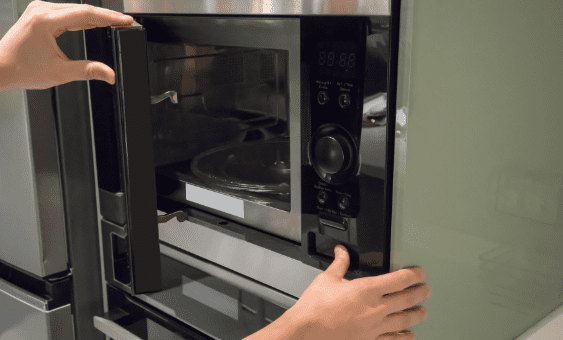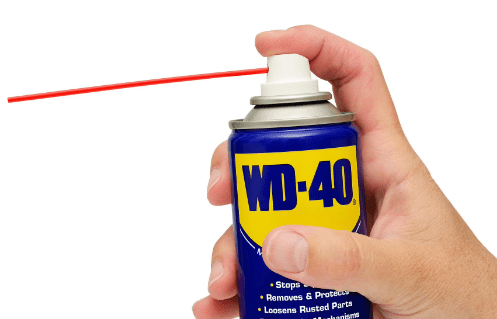Greetings, fellow kitchen explorers and curious minds! Have you ever found yourself staring at your trusty microwave, wondering if the magical elixir known as WD-40 could tame its creaks and groans? Well, my fellow adventurers, you’re about to embark on a journey of culinary discovery and DIY experimentation as we unravel the mystery of whether WD-40 and microwave doors are a match made in heaven. As a self-proclaimed kitchen tinkerer and problem solver, I couldn’t resist diving into this intriguing question. So, let’s don our metaphorical lab coats and delve deep into the world of lubricants, microwave mechanics, and domestic quests for squeak-free sustenance!
Understanding WD-40
First and foremost, let’s get acquainted with the star of our experiment: WD-40. It’s not just a snappy name; it’s short for “Water Displacement, 40th formula,” and it’s been a household hero for decades. WD-40 isn’t your average one-trick pony; it’s a versatile concoction that plays the roles of solvent, lubricant, and rust inhibitor with finesse. From silencing door hinges to unjamming zippers, this humble can of liquid magic has earned its place in our toolkit.
The Microwave Door and Its Components
Before we plunge into the mysteries of microwave maintenance, let’s take a moment to appreciate the complexity of the microwave door. It’s not merely an entry point for our leftovers; it’s a harmonious symphony of hinges, latches, seals, and safety mechanisms that work together to keep those electromagnetic waves right where they belong. A well-functioning microwave door is crucial for preserving flavor, texture, and even the integrity of the microwave itself.

Potential Issues with Microwave Doors
Now, let’s address the elephant in the kitchen: those bothersome microwave door issues. Is your microwave door squeaking like a mouse with a megaphone, or perhaps it’s stubbornly refusing to open or close smoothly? These annoyances can disrupt our culinary routines and leave us contemplating a heroic rescue with our trusty WD-40. But, and it’s a big but, haphazardly applying WD-40 without understanding its implications could lead to unintended consequences.
Can You Use WD-40 on a Microwave Door?
Ah, the million-degree microwave question: can WD-40 and microwave doors coexist? The answer isn’t as straightforward as we’d hope. While some experts and manufacturers might cautiously give the nod, others raise a figurative eyebrow and wag their finger in disapproval. The primary concern here is the possibility of WD-40 residue coming into contact with your food or the interior of the microwave during use. And trust me, as much as I adore innovation, a side of lubricant-infused popcorn isn’t what I had in mind.

Safe Alternatives for Maintaining Microwave Doors
Take a deep breath, aspiring microwave whisperers, for hope is not lost! In our quest for a squeak-free, functional microwave door, there are alternatives that won’t send you into a tailspin of culinary paranoia. Enter the stage: food-grade lubricants.
These unsung heroes are designed to keep things moving smoothly without jeopardizing your safety or the deliciousness of your meals. So, before you grab that WD-40, consider the food-friendly options that’ll keep your microwave—and your peace of mind—intact.
Proper Maintenance of Microwave Doors
Ah, the age-old adage “prevention is better than cure” rings true even in the realm of microwave doors. While we might be tempted to reach for the quick fix, regular maintenance can save us from many a headache down the road. Simple tasks like cleaning the seals, checking for debris, and giving your microwave door a gentle wipe-down can work wonders in preventing these issues from popping up in the first place.
Steps to Address Common Microwave Door Issues
But let’s say you’re past the prevention stage and your microwave door is staging a full-blown rebellion. Fear not, for I’ve got your back with some step-by-step instructions to tackle those pesky problems head-on. From coaxing out a stubborn squeak to guiding a jammed latch back to its rightful place, I’ll guide you through the troubleshooting process with the finesse of a seasoned microwave whisperer.

DIY vs. Professional Repair
Now, let’s talk about the gray area between a microwave door’s stubbornness and a DIY enthusiast’s determination. While I’m all for channeling our inner MacGyver, there are times when professional intervention is the wisest course of action. A wonky microwave door isn’t just an inconvenience; it could potentially compromise the safety and efficiency of your microwave. So, before you grab your toolbox, weigh the risks and rewards of embarking on a DIY microwave rescue mission.
Conclusion
And there you have it, my fellow culinary curious minds—a comprehensive guide to the age-old question: Can you use WD-40 on a microwave door? While I’d love to provide a clear-cut answer, the reality is a bit more nuanced. The potential risks to your food and your microwave’s inner workings mean that while WD-40 might work wonders elsewhere, it’s not the ideal choice for your microwave door.
So, the next time your microwave door serenades you with squeaks and groans, consider the food-grade alternatives that won’t turn your reheated meals into a chemistry experiment. Remember, a well-maintained microwave door is a happy microwave door, and you don’t need to be a DIY extraordinaire to keep things running smoothly. As for me, I’ve come to embrace the quirks of my microwave’s personality, and I’m delighted to report that my kitchen escapades continue with fewer interruptions and more culinary delights.

